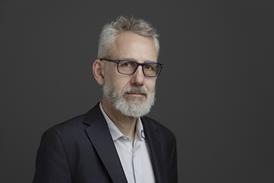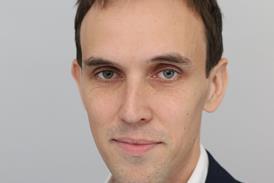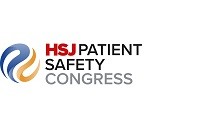Home rehabilitation is a vital component of improving stroke care. Mirek Skrypak and colleagues explain how they have put it into practice in north London.
A vital priority within the NHS’s accelerating stroke improvement programme is to ensure that 40 per cent of all stroke survivors are provided with specialist early supported discharge (ESD) services from hospital.
ESD services provide patients with rehabilitation at home at the same intensity of inpatient care. They are commissioned to improve transfer of care arrangements, offer client choice, deliver efficiencies in acute bed usage and deliver improved clinical and wellbeing outcomes.
In practice, only 36 per cent of eligible stroke survivors have access to local stroke ESD services. Apart from there being variation in what defines an ESD service and the criteria for acceptance of a patient by such a team, the 2010 Care Quality Commission audit for stroke highlighted that only 18 per cent of these services have appropriate staffing.
A 2005 Cochrane systematic review provided evidence of the effectiveness of ESD services. However, interpreting, and more importantly successfully implementing, such a complex rehabilitation pathway has been a long-standing challenge.
Therefore the question is not whether these teams should exist, but rather how do successful teams meet the recommendations, standards and measures that enable a person after their stroke to receive rehabilitation earlier and deliver it within their home.
One example of a successful team is the Camden stroke reach early discharge service (REDS). A National Institute for Health and Clinical Excellence assessment of its approach showed that savings of £83,000 per 100,000 population can be achieved through reduction of an average of 10 stroke bed days and by reducing ongoing dependence on social care packages by an average of 19 hours per week.
Health and social needs
The Camden service was jointly commissioned to meet health and social needs for people in the London borough from an ESD point of view. It was developed from a fully functioning community rehabilitation service and is seen as an add-on to an existing stroke pathway within Camden.
The stroke team reaches into the hyper-acute, acute and inpatient rehabilitation units within Camden. This eliminates the need for paper referrals as the team is present and visible within the acute stroke setting. The team facilitates and takes ownership for discharge by assessing within the units, discharging the person to their home, and providing an in-house enabling package of care. This process is usually completed within 24 hours, although it is often completed on the same day as referral.
The service aims to offer daily therapy to ensure that people on the ESD pathway are not deprived of specialist stroke rehabilitation by going home early. The team currently takes 42 per cent of stroke survivors in Camden home via ESD (2011-12 quarter 1 and 2). By the end of the team’s intervention, around 80 per cent of all enabling packages of care are able to be completely withdrawn.
Referrals to social services for ongoing packages of care and to the neuro team for any further rehabilitation needs are completed by the key workers.
In order to achieve these outcomes the Camden team is appropriately resourced (by matching its demand with its capacity) and utilises its own in-house enabling carers from the Carelink service. The staffing levels in the team, however, are higher than those reported in the ESD literature.
The Cochrane review recommended the following staffing for an ESD team seeing 100 patients per year on their caseload (whole time equivalent values are given in brackets):
- Physiotherapist (1.0)
- Occupational therapist (1.0)
- Speech and language therapist (0.4)
- Nurse (0-1.2)
- Physician (0.1)
- Social worker (0-0.5)
The Camden team has the following staffing levels for 80 patients per year on their caseload:
- Physiotherapist (2.0)
- Occupational therapist (2.0)
- Speech and language therapist (1.0)
- Nurse (1.0)
- Rehabilitation assistant (1.0)
- Psychologist (0.5)
- Dietician (0.2)
- Social worker (0.5)
- Team coordinator – occupational therapist (1.0)
Since the Cochrane review guidance, the 2010 NICE guidance states that patients with stroke should be “offered a minimum of 45 minutes of each active therapy that is required, for a minimum of five days a week, at a level that enables the patient to meet their rehabilitation goals for as long as they are continuing to benefit from the therapy and are able to tolerate it”.
This creates many questions: a pertinent one being how long the ESD involvement should be for. Nationally, this ranges between two weeks and some operating beyond 12 weeks. In their article “Early Supported Discharge After Stroke”, Peter Langhorne and Lotta Widen-Holmqvist describe a typical ESD service lasting for six weeks, which is also the usual duration for intervention by the Camden team.
Taking the Cochrane recommended staffing levels and assuming that 100 stroke patients per year on an ESD caseload could benefit from, and tolerate, five daily sessions of 45 minutes per week, for a period of six weeks, there is a shortfall.
This is highlighted in the table, right, which shows the potential therapy hours needed cannot be met by one physiotherapist, one occupational therapist and 0.4 of a speech and language therapist. The demand and capacity calculations show that to meet the required recommendations and guidelines, a team containing more than 10 whole time equivalents would be needed.
It would be highly unlikely, however, that every patient in the above example would require or even benefit from daily therapy. Also not everyone will need intervention from every discipline, and this is particularly the case for speech and language therapy.
Nevertheless, scenarios could occur where there may be 10 people on the ESD caseload who require daily physiotherapy.
It is not hard to see why one physiotherapist could not see the 10 people daily, as there are not enough hours in the working day. One of the complex issues with a stroke pathway is that predicting numbers of people entering it is not an exact science.
A different approach towards demand and capacity is needed when focusing on rehabilitation and service provision specific to a diagnosis such as stroke.
In order to evaluate allocating adequate resources to manage long terms conditions through a rehabilitative multidisciplinary team approach, the following information should be obtained:
- local demographic information;
- local geographical information;
- local prevalence of specific diseases;
- numbers diagnosed with specific conditions/year;
- rehabilitation needs as a result of disease;
- evidence based rehabilitation models;
- rehabilitation team structures;
- service provision and operation of rehabilitation team;
- location of service;
- administration of service;
- clinical accountability and governance of service;
- coordination and management of service.
Focus on sustainability
This information provided the basis for determining the Camden model. This type of approach to demand and capacity can therefore contribute to adequate planning and operational delivery focusing on sustainability of high quality care and future-proofing.
There is also value in having an ESD service structured within a community rehabilitation team, rather than being a standalone service. It provides community rehabilitation teams with flexible capacity and access to specialist advice and support. It further enables smoother patient transition into long term care and support. Camden’s life after stroke services were rated top in London and third best nationally.
Potential therapy hours needed per borough
| Demand and capacity calculations | Number |
|---|---|
| Stroke survivors per annum | 250 |
| Assume 40 per cent are eligible for six week early supported discharge | 100 |
| Therapy hours needed per year for OT at 28.5 hours per patient | 2,850 |
| Therapy hours needed per year for PT at 28.5 hours per patient | 2,850 |
| Therapy hours needed per year for SALT at 28.5 hours per patient | 2,850 |
| Number of OTs needed for 6 weeks of ESD at 777 hours available per year | 3.67 |
| Number of PTs needed for 6 weeks of ESD at 777 hours available per year | 3.67 |
| Number of SALTs needed for 6 weeks of ESD at 777 hours available per year | 3.67 |
Assumptions in calculations
- Each discipline is based on six weeks at three hours 45 minutes per week – 1,350 mins or 22.5 hours (demand).
- As per RCP national stroke guidelines 2008, multidisciplinary team meetings should occur every week, therefore six weeks of ESD provision would contain six hours of MDT meetings (1 hour per week). This equates to an additional six hours for each OT, PT, SALT.
- These calculations are based on a therapist being available for 42 weeks a year to account for annual leave, sickness, study leave, etc.
- A web search of time in motion audits and studies of actual time spent in providing therapy to NHS patients in the community appears to average in the range of anywhere between 20-40 per cent. For the purpose of this example if a therapist works 37.5 hours per week and assuming of this time they have 50 per cent capacity to have direct patient contact, then they are able to see patients for a total of 18.75 hours per week (capacity)



























No comments yet